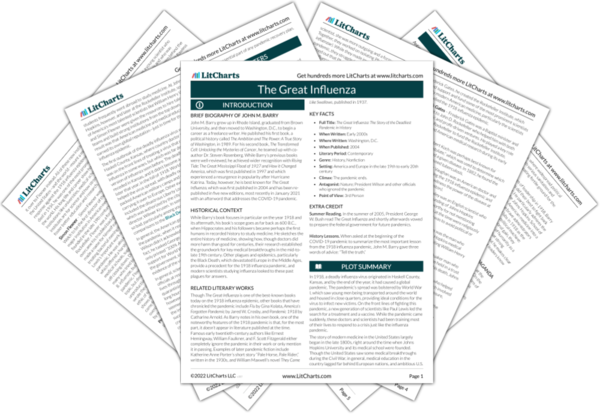Though Barry criticizes many of Wilson’s actions, particularly when it comes to restricting the free press, he also acknowledges successes during the 1918 pandemic, particularly the work of the Red Cross. Though Barry argues that leadership plays a crucial role during public health emergencies, he also acknowledges that sometimes it’s difficult to give credit or assign blame to individuals, especially for mass movements like the Red Cross that sometimes gain strength from questionable policies.
